Description
Grow this Sweet Treat Yourself
The Carica papaya, commonly known as papaya, is a tropical fruit tree celebrated for its sweet, juicy fruit and ornamental foliage. Originating from Central America, this fast-growing tree features large, palmately lobed leaves and a straight trunk topped with clusters of green fruits. Papayas come in various shapes and sizes, with smooth, orange or yellow skin when ripe and soft, vibrant orange flesh filled with black seeds. Known for their rich flavor and high nutritional value, papayas are enjoyed fresh, in smoothies, salads, and desserts
Caring for your Papaya
Easy to cultivate, papaya trees thrive in warm climates with well-drained soil and ample sunlight. Regular watering and occasional fertilization promote healthy growth and abundant fruit production. Whether grown for its delicious fruits or as an attractive landscape plant, the Carica papaya adds a tropical touch to any garden or orchard.
Light
Papayas thrive in tropical and subtropical climates with temperatures consistently above 60°F (16°C). They prefer full sun exposure for at least 6 to 8 hours a day. Plant papaya trees in a location protected from strong winds, as their shallow roots can be easily damaged. If you live in a cooler climate, consider growing papayas in containers that can be moved indoors during the colder months.
Soil
Papayas prefer well-draining, fertile soil with a pH level between 6.0 to 7.0. Sandy loam or loamy soil types are ideal for optimal root development and water drainage. Ensure the soil is rich in organic matter by amending it with compost or well-decomposed manure before planting. Avoid planting papayas in heavy clay soils, as they can lead to poor drainage and root rot.
Choose a planting site with sufficient space to accommodate the mature size of the papaya tree, which can reach heights of up to 30 feet. Dig a hole that is twice as wide and slightly deeper than the root ball of the sapling. Place the tree in the center of the hole and backfill with soil, ensuring that the graft union is above the soil line. Water the newly planted tree thoroughly to settle the soil and remove any air pockets around the roots. Mulch the area around the base of the tree with organic mulch to retain moisture and suppress weed growth.
Water
Provide regular, deep watering to papaya trees, especially during the dry season or periods of drought. Water young trees deeply once or twice a week, allowing the soil to dry slightly between waterings. Mature trees may require less frequent watering but still benefit from deep irrigation during prolonged dry spells. Avoid overwatering, as excessive moisture can lead to root rot and other fungal diseases.
Fertilization
Apply a balanced fertilizer specifically formulated for fruit trees to promote healthy growth and fruit production. Fertilize young papaya trees every 2 to 3 months during the growing season, starting in early spring. Mature trees can be fertilized 3 to 4 times a year, with reduced frequency during the winter months. Follow the manufacturer’s instructions for application rates and timing, and avoid applying fertilizer directly to the trunk to prevent burning.
Pruning
Prune papaya trees annually to maintain their shape, remove dead or diseased branches, and improve air circulation within the canopy. Conduct pruning during the dormant season, preferably in late winter or early spring, before new growth begins. Use clean, sharp pruning tools to make clean cuts and minimize the risk of introducing pathogens. Remove any suckers or water sprouts that emerge from the base of the tree or along the trunk. Prune branches that are crossing or rubbing against each other to prevent damage and encourage proper growth.
Pest and Disease Management
Keep papaya trees healthy and stress-free to minimize susceptibility to pests and diseases. Monitor the trees regularly for signs of pests such as aphids, scales, mites, and fruit flies. Control pest infestations with insecticidal soap, horticultural oil, or neem oil, following the manufacturer’s instructions. Practice good sanitation by removing fallen leaves, fruits, and debris from around the base of the tree to prevent fungal diseases. Treat fungal infections such as powdery mildew or anthracnose with fungicides labeled for use on fruit trees, if necessary.
Harvesting
Papayas typically ripen 4 to 6 months after flowering, depending on the variety and growing conditions. Harvest fruits when they are fully mature and have developed a deep, orange color and yield slightly to gentle pressure. Use pruning shears to cut the fruits from the tree, leaving a short stem attached. Handle harvested fruits with care to avoid bruising or damage, as they are susceptible to spoilage.

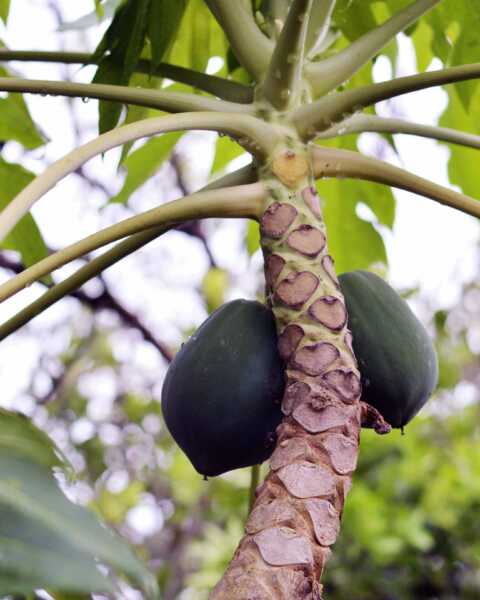
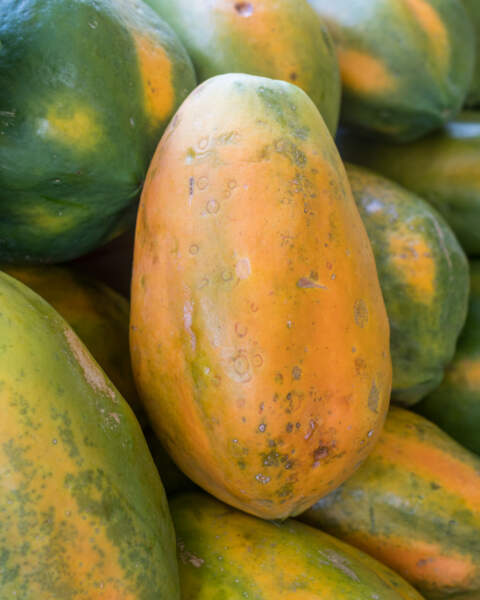
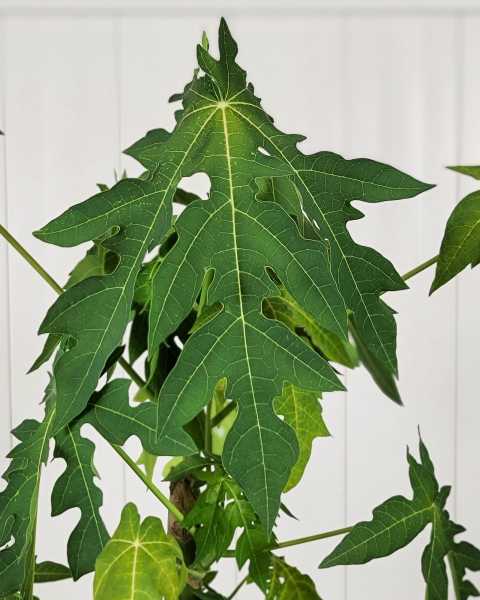
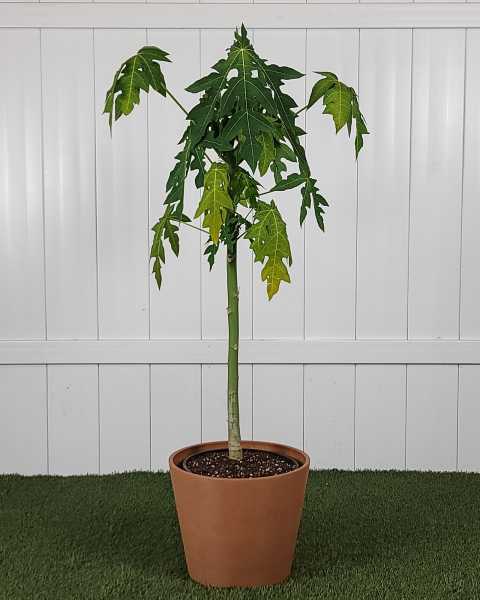








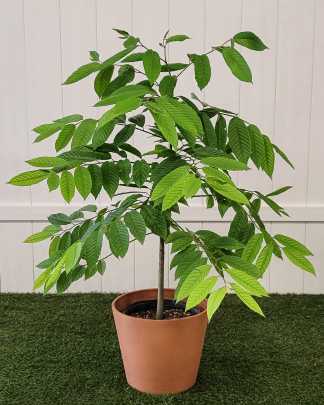
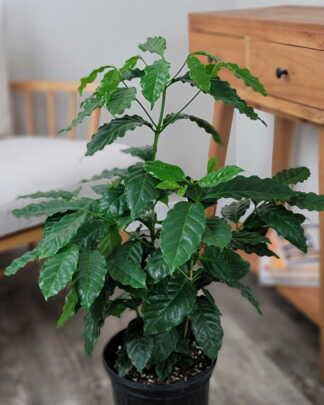
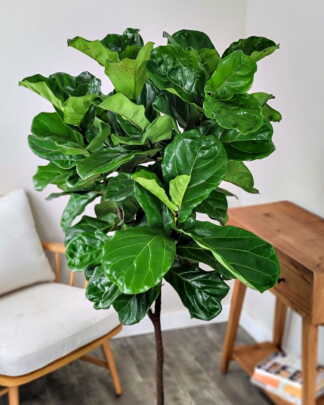


KEVIN THACKER (verified owner) –
Sean (verified owner) –
Much larger than expected (around 4 feet tall), and already getting ready to flower! It’s a very pretty plant, too- I love the interesting leaf shape!
The one I got appears to be a hermaphrodite type, so it’s self- fertile, and will produce papayas without a second variety.